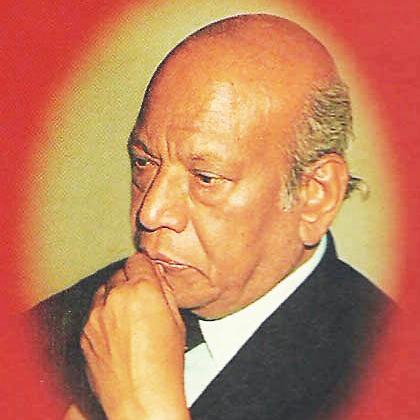Obituary
B.D. Garga

Documentary maker, film historian and benefactor of world cinema
1924–18 July 2011
Bhagwan Garga, who died on 18 July 2011 in Patiala, India, was a pioneering documentary filmmaker, a respected film historian and one of cinema’s true internationalists.
Born in 1924 in Lehra in East Punjab, he was sent to an English medium school run by Christian missionaries in Lahore. An early interest in photography earned him recognition from the Illustrated Weekly of India, which published some of his photographs. His father’s wish that he attend medical school was soon undercut by Bhagwan’s expulsion from Lahore because of his political activities during the independence movement.
In 1943 Garga moved to Bombay, already the film capital of India, and began studying and working in films under the director V. Shantaram. He also fell under the influence of K.A. Abbas, a leftwing journalist and one of India’s best informed film critics, who encouraged the young film enthusiast to begin writing a history of Indian cinema for Abbas’s recently founded Urdu-language journal Sargam. At the same time Garga made Storm over Kashmir (1948-49), the first of over 50 documentaries he would write, direct and produce.
In 1953 Garga’s practical and scholarly interest in the cinema took him to Britain, where he became involved with British Film Institute and frequently visited Ealing studios to watch directors at work. He also travelled to France and struck up a lasting friendship with Henri Langlois, director of the famed archive Cinémathèque française and clearly a man after his own heart. Writing in Filmfare after Langlois’ death in 1977, Bhagwan referred to him as “world cinema’s greatest benefactor”.
During his time in Europe Bhagwan met up again with his mentor Abbas and worked with him on Pardesi (1957), an Indo-Soviet co-production about Afansi Nikitin, a Russian traveller who discovered India a decade before Vasco da Gama. This took him to the Soviet Union where – his writings having been translated into Russian – he was welcomed into the charmed circle of film historians and archivists. He was able to persuade the authorities to arrange for a private screening of the banned second half of Eisenstein’s Ivan the Terrible (1958), which he wrote about for Sight & Sound on his return.
After many years of collecting, making, researching and writing about films, Bhagwan and his wife Donnabelle (a formidable film researcher in her own right) moved from Bombay to Goa in 1992. This was no retirement, however, and despite failing health and eyesight he maintained a strict daily working regime. During this time he produced the beautiful So Many Cinemas: The Motion Picture in India (a history which used much of his own archive material), From Raj to Swaraj:The Non-Fiction Film in India, The Art of Cinema: An Insider’s Journey through Fifty Years of Film History and a soon to be published Pictorial History of Indian Silent Cinema. True to form, Bhagwan put the final touches to the manuscript just days before he died.
Jill Dimmock
See also
Shaking the world: Mark Cousins proposes ten films that made a difference (September 2007)
The Dreamers reviewed by Ginette Vincendeau (February 2004)
Bollywood ending: J. Geetha on a splitting of Bollywood cinema into domestic and diasporan spheres (June 2003)
Paris match: Geoffrey Nowell-Smith on Godard, Cahiers du cinéma and the French New Wave (June 2001)
